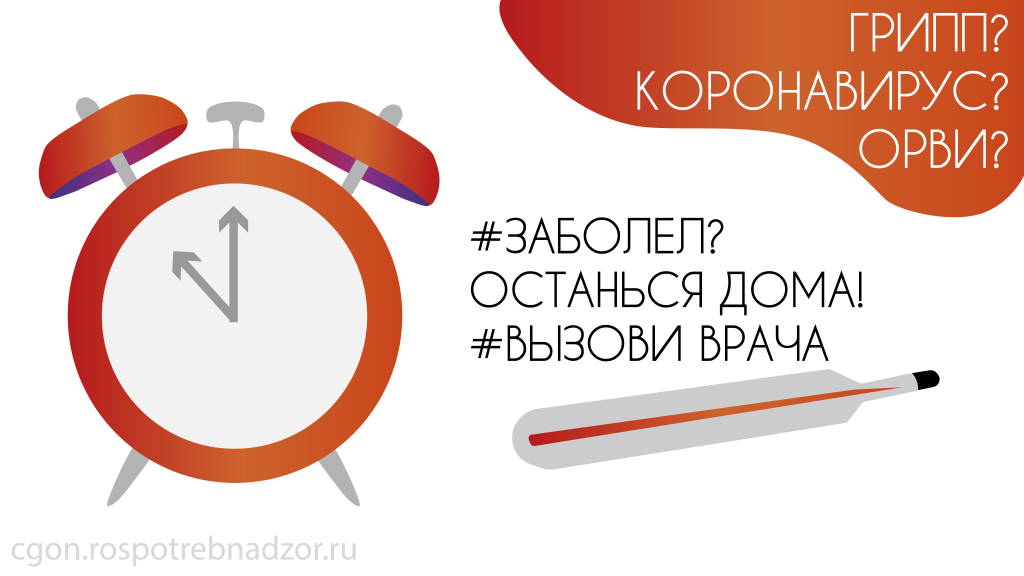
- 04 February 2020
- 421
Prevention of influenza and coronavirus infection
Memo: Prevention of influenza and coronavirus infection
Influenza viruses and coronavirus infections cause respiratory diseases of different severity in humans. Symptoms of the disease are similar to those of ordinary (seasonal) flu. The severity of the disease depends on a number of factors, including the general condition of the body and age.
Predisposed to the disease: elderly people, small children, pregnant women and people suffering from chronic diseases (asthma, diabetes, cardiovascular diseases), and with weakened immunity.
RULE 1. WASH HANDS WITH SOAP
Clean and disinfect surfaces using household detergents.

Hand hygiene is an important measure to prevent the spread of influenza and coronavirus infection. Washing with soap removes viruses. If it is not possible to wash your hands with soap, use alcohol-containing or disinfecting wipes.
Cleaning and regular disinfection of surfaces (tables, door handles, chairs, gadgets, etc.) removes viruses.
RULE 2. FOLLOW DISTANCE AND DECAL
Viruses are transmitted from a sick person to a healthy person by airborne droplets (by sneezing, coughing), therefore a distance of at least 1 meter from patients must be observed.
Avoid touching your eyes, nose, or mouth. Influenza virus and coronavirus spread through these pathways.
Wear a mask or use other improvised protective equipment to reduce the risk of illness.
When coughing, sneezing, cover your mouth and nose with disposable wipes, which should be discarded after use.

Avoiding unnecessary trips and visiting crowded places can reduce the risk of illness.
RULE 3. LEAD A HEALTHY LIFESTYLE
A healthy lifestyle increases the body's resistance to infection. Follow a healthy regimen, including proper sleep, consumption of foods rich in proteins, vitamins and minerals, and physical activity.
RULE 4. PROTECT RESPIRATORY BODIES WITH THE MEDICAL MASK
Among other means of prevention, wearing masks occupies a special place, thanks to which the spread of the virus is limited. Medical masks for respiratory protection use:
- when visiting crowded places, traveling by public transport during the period of increasing incidence of acute respiratory viral infections;
- when caring for patients with acute respiratory viral infections;
- when communicating with persons with signs of acute respiratory viral infection;
- with the risks of infection by other infections transmitted by airborne droplets.

HOW TO CARE THE MASK CORRECTLY?
Masks can have a different design. They can be disposable or can be used repeatedly. There are masks that serve 2, 4, 6 hours. The cost of these masks is different, due to different impregnation. But you can’t wear the same mask all the time, so you can infect yourself twice. Which side inward to wear a medical mask is unprincipled.
To protect yourself from infection, it is extremely important to wear it correctly:
- the mask should be carefully fixed, tightly close the mouth and nose, without leaving gaps;
- try not to touch the surfaces of the mask when removing it, if you touch it, wash your hands thoroughly with soap or alcohol;
- wet or damp mask should be replaced with a new, dry;
- do not use a disposable mask a second time;
- The used disposable mask should be discarded immediately.
When caring for the patient, after the end of contact with the sick person, the mask should be removed immediately. After removing the mask, wash your hands immediately and thoroughly.
The mask is appropriate if you are in a place of crowded people, in public transport, and also when caring for the sick, but it is not practical in the open air.
During your stay on the street, it is useful to breathe fresh air and you should not wear a mask.
At the same time, doctors remind that this single measure was not provided! full protection against the disease. In addition to wearing a mask, other preventive measures must be observed.
RULE 5. WHAT TO DO IN CASE OF INFLUENCE OF INFLUENZA, CORONAVIRAL INFECTION?
Stay at home and call a doctor immediately. Follow your doctor's instructions, observe bed rest, and drink as much fluid as possible.

WHAT ARE THE SYMPTOMS OF INFLUENZA / CORONAVIRUS INFECTION?
High body temperature, chills, headache, weakness, nasal congestion, cough, shortness of breath, muscle pain, conjunctivitis.
In some cases, there may be symptoms of a gastrointestinal upset: nausea, vomiting, diarrhea.
WHAT ARE THE COMPLICATIONS
Among the complications, viral pneumonia is leading. Deterioration in viral pneumonia is proceeding rapidly, and many patients have already developed respiratory failure within 24 hours, requiring immediate respiratory support with mechanical ventilation.
Quickly started treatment helps to alleviate the severity of the disease.
WHAT TO DO IF ANY FAMILY / CORONAVIRAL INFECTIONS IN THE FAMILY?
Call a doctor.
Allow the patient a separate room in the house. If this is not possible, observe a distance of at least 1 meter from the patient.
Minimize contact between the patient and loved ones, especially children, the elderly and those with chronic conditions.
Ventilate the room frequently.
Keep clean, wash and disinfect surfaces with household detergents as often as possible.
Wash your hands often with soap.
When caring for a patient, cover your mouth and nose with a mask or other protective equipment (scarf, etc.).
Only one family member should look after the patient.


 English
English Russian
Russian Chinese
Chinese